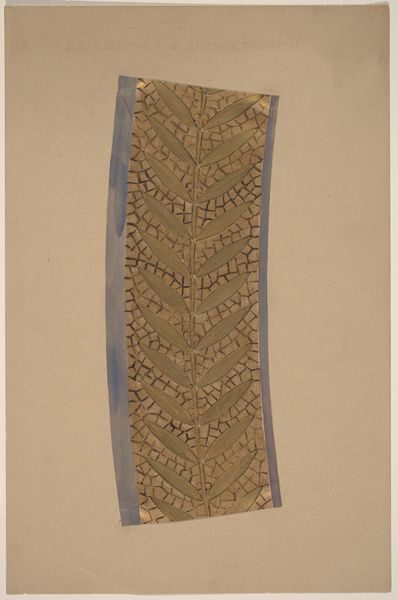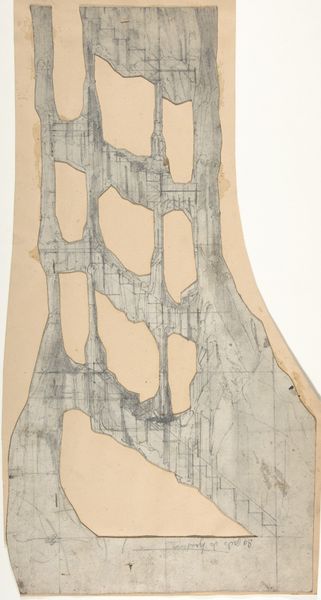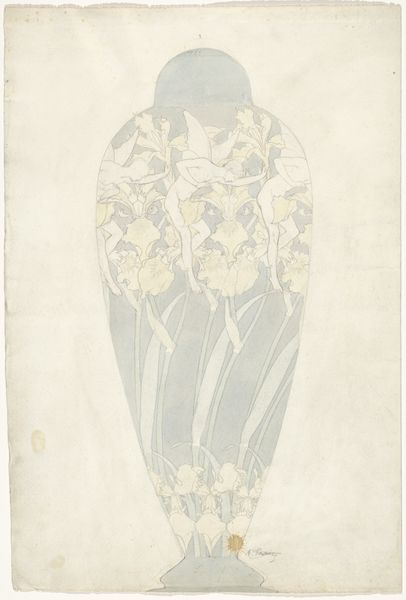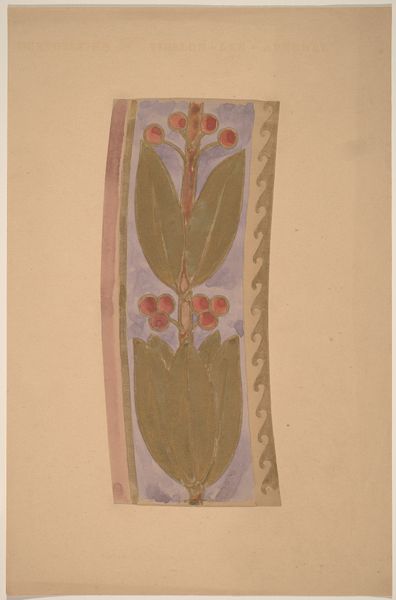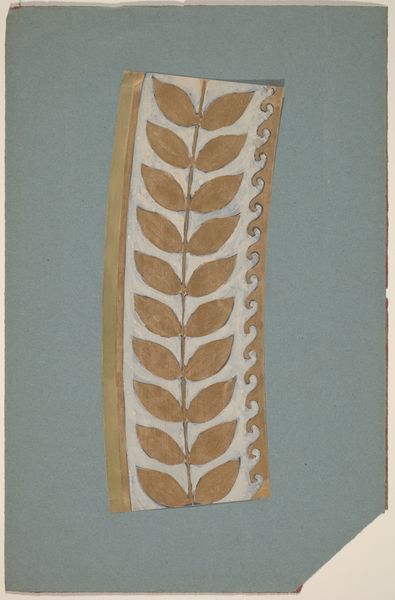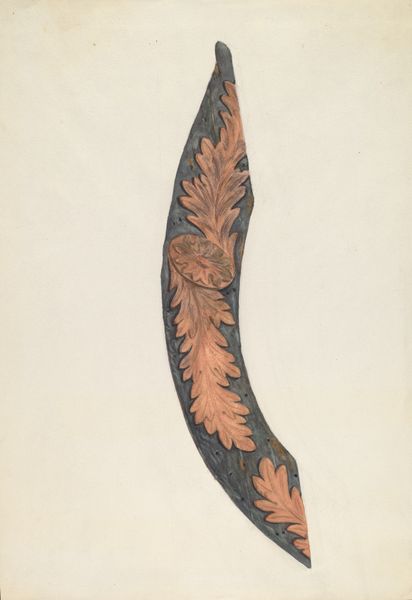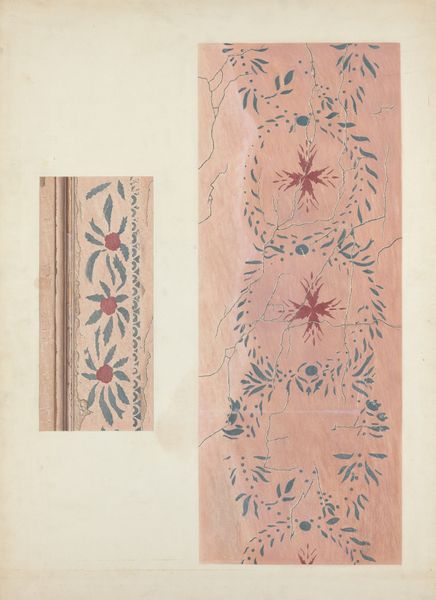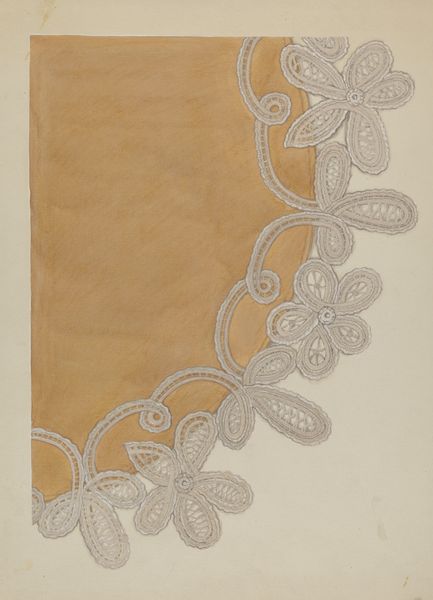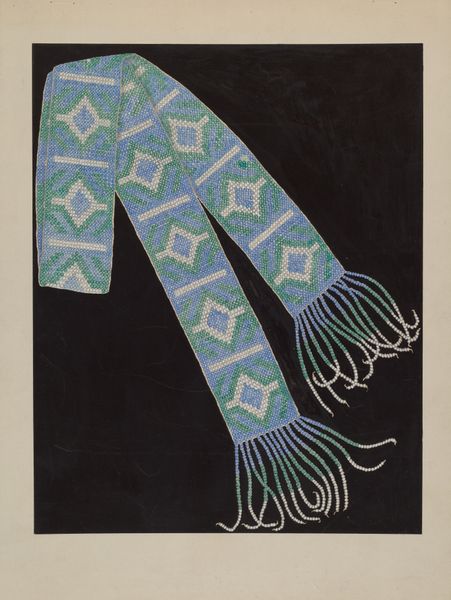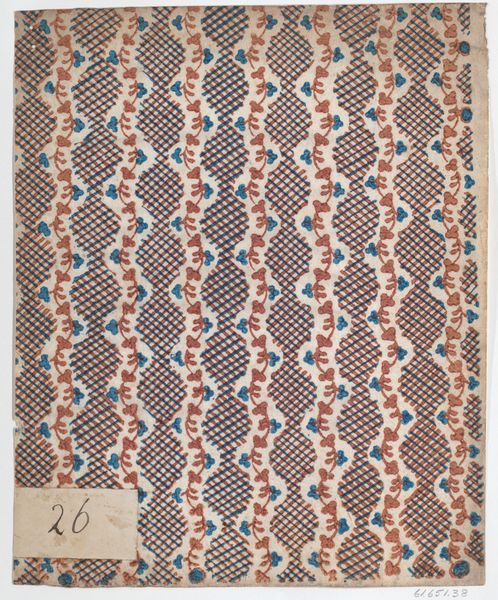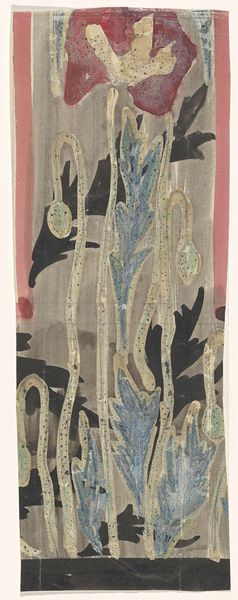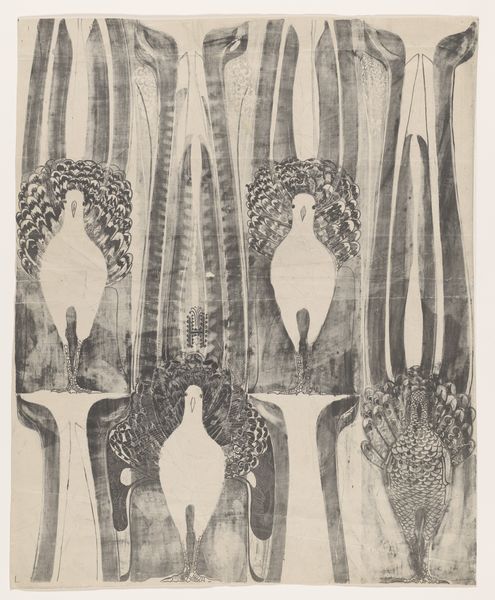
drawing, paper
#
drawing
#
art-nouveau
#
paper
#
line
#
decorative-art
Dimensions: sheet (irregular): 44.3 × 13.3 cm (17 7/16 × 5 1/4 in.) mount: 45.6 × 30 cm (17 15/16 × 11 13/16 in.)
Copyright: National Gallery of Art: CC0 1.0
Curator: This watercolor drawing is titled "Study for a Border Design," created by Charles Sprague Pearce sometime between 1890 and 1897. What strikes you initially about it? Editor: There's something immediately calming about this piece. The muted blues and greens, the repetitive patterns...it feels both grounded and like it's aspiring towards some unknown natural ideal. Curator: Exactly! Consider the context: the late 19th century was a period ripe with social and political upheaval, driven by industrialization and massive cultural shifts. This piece could be viewed as a yearning for order and stability amidst such chaos, a visual embrace of serenity and perhaps escapism. Editor: I see what you mean. The repetitive use of leaf-like shapes, interconnected with geometric forms evokes this feeling of timelessness, echoing motifs seen across cultures from ancient Greece to the Art Nouveau movement itself. Those stylized leaves—what could they signify in this period? Curator: Given the historical context, they might represent a resistance against the dehumanizing effects of industrialization. Nature, as a site of purity and authenticity, could be seen as a silent protest. Furthermore, decorative arts during this era were deeply connected with feminist movements, pushing back against patriarchal structures by revaluing traditionally "feminine" crafts and aesthetics. Editor: Absolutely. And those looping forms connecting the leaves—they bring to mind intertwined fates, perhaps a nod to the interconnectedness of nature itself. Given the time period, could there be echoes of earlier mythologies in the imagery here? Is Pearce consciously referencing the classical world, where wreaths and foliage symbolized achievement and continuity? Curator: Perhaps implicitly. There's a deliberate, almost architectural structure to the design. It functions not just as a pattern, but almost as a symbolic wall – a border – both containing and delineating a space. And what's more, a space potentially safe from external, disrupting influences. Editor: That resonates. The cool color palette also seems significant—almost monastic in its restraint. Perhaps Pearce sought to establish a visual language that communicated both longing and quiet resolve. It certainly makes one think about borders, and not just in their aesthetic sense. Curator: Yes, there is such depth to it, particularly if we think of borders as constructs laden with meaning: socio-economic, cultural, ideological, as well as physical. Pearce’s simple design touches on so many layers of signification. Editor: A final reflection: its beauty lies not only in its pleasing symmetry but in the depth of interpretations it opens up. Its apparent simplicity is deceptive; a silent force reverberates beneath its tranquil surface.
Comments
No comments
Be the first to comment and join the conversation on the ultimate creative platform.

